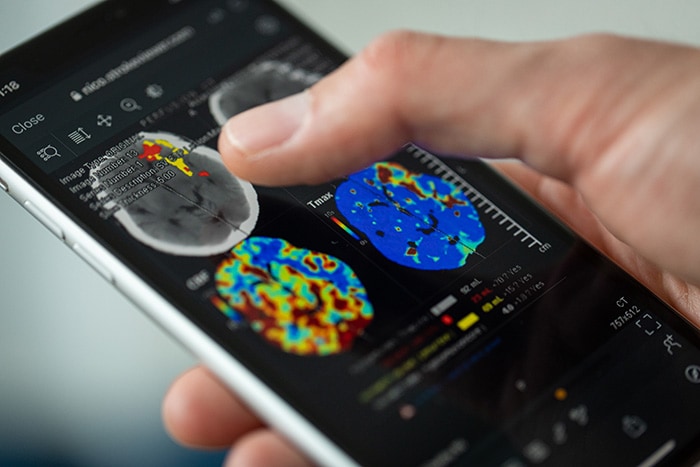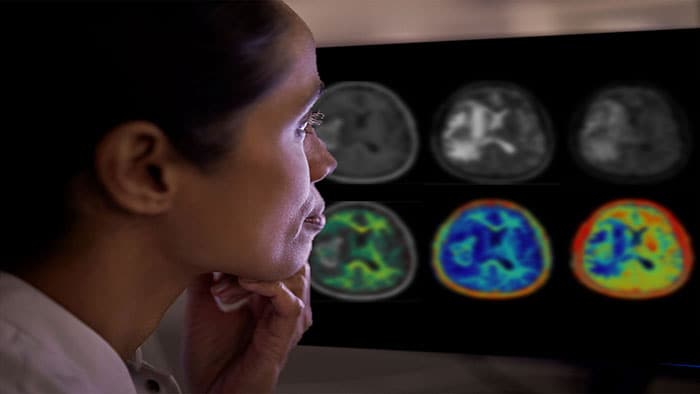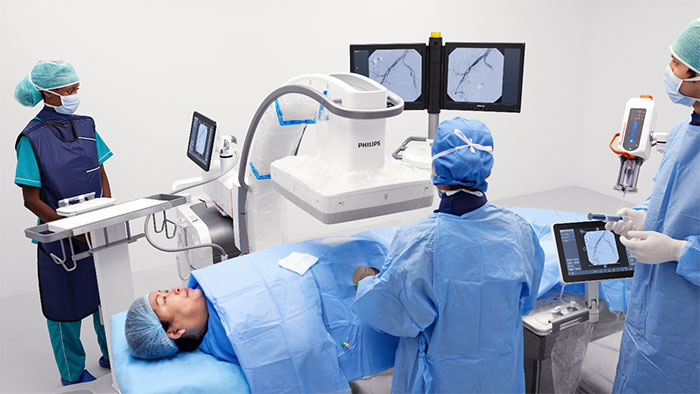Jul 07, 2021
Philips accelerates stroke diagnosis and treatment with expanded integrated solutions and strategic partnership
Amsterdam, the Netherlands – Royal Philips (NYSE: PHG, AEX: PHIA), a global leader in health technology, today announced a strategic partnership agreement with NICO.LAB, a MedTech stroke care company. Together with the recently expanded stroke capabilities of Philips Image Guided Therapy System – Azurion – this new partnership significantly advances Philips’ commitment to improving outcomes for people who suffer a stroke. Philips is connecting information, technologies and people across the stroke care pathway, enabling care teams to work quickly and act decisively - a key factor in providing the best patient treatment.
Stroke remains the leading cause of disability
Globally, one in four adults over the age of 25 will suffer a stroke in their lifetime [1]. Stroke is the leading cause of disability and the second leading cause of death worldwide [2]. According to the U.S. National Stroke Association, 40% of stroke victims experience moderate to severe impairments that require special needs for the rest of their lives, with another 25% continuing to suffer minor impairments [3].
The key to reducing the risk of death or disability is to get stroke patients treated as quickly as possible. Physicians in an emergency stroke setting are fighting the clock and are under intense pressure to make optimal treatment decisions. Despite the imperative for speed, care teams currently lose valuable time due to gaps in communication, information, and access to stroke expertise.
“The biggest gain for faster treatment for stroke patients is in the workflow,” said Professor Dr. Wim van Zwam, Interventional Radiologist at Maastricht University Medical Center. “Reducing the throughput time of patients requires faster exchange of critical patient information, such as high-quality medical images, between hospitals and departments, in order to decide on the best patient treatment.”
Solutions across the stroke care pathway
Philips has a deep portfolio of stroke care solutions and a strong commitment to further innovation in this field. Its partnership with NICO.LAB brings a cloud-based, end-to-end artificial intelligence (AI) based stroke triage and management solution - StrokeViewer - that aims to improve patient outcome by optimizing the stroke workflow. It analyzes CT scan data with AI, and automatically detects large vessel occlusion (LVO) and its location. It then shares this analysis with physicians at both primary stroke centers (general radiologists and neurologist) and intervention centers (stroke neurologists, interventional neurologists, and radiologists) where the patient is eventually treated.
Recent Philips innovations that optimize the imaging capabilities of its Image Guided Therapy Angiography Suite with new 3D visualization and measurement tool – SmartCT – aim to get patients into treatment quickly.
Philips is also pioneering a new approach to speed up stroke treatment for early time-window stroke patients (less than six hours after stroke onset) by bypassing diagnostic CT or MR scans at certain types of stroke center. Earlier today, Philips announced the first patient being enrolled in the WE-TRUST study - a global multi-center randomized clinical trial to assess the impact of a Direct to Angio Suite workflow focusing on improving care for stroke patients. This approach can allow for quick patient routing, and with the new SmartCT imaging capabilities in Philips’ Azurion Angio Suite, further diagnosis can be done to confirm eligibility for treatment.
By expanding our offerings in stroke care we are able to provide an integrated portfolio of intelligent solutions across the full stroke care pathway, giving clinicians the right information during every critical step.
Bert van Meurs
Chief Business Leader for Image Guided Therapy at Philips
“By expanding our offerings in stroke care we are able to provide an integrated portfolio of intelligent solutions across the full stroke care pathway, giving clinicians the right information during every critical step,” said Bert van Meurs, Chief Business Leader for Image Guided Therapy at Philips. “With our integrated portfolio, and by using validated AI and cloud technologies, we can facilitate collaborative care to optimize the stroke care pathway from diagnosis to treatment.”
Philips’ stroke portfolio includes solutions for stroke monitoring and communication in ambulances, tele-stroke patient assessment, diagnostic imaging and analysis, image-guided therapy, neurological monitoring and assessment, and more.
[1] World Stroke Organization
[2] Global Burden of Stroke, PubMed.
[3] U.S. National Stroke Association
About Royal Philips
Royal Philips (NYSE: PHG, AEX: PHIA) is a leading health technology company focused on improving people's health and well-being, and enabling better outcomes across the health continuum – from healthy living and prevention, to diagnosis, treatment and home care. Philips leverages advanced technology and deep clinical and consumer insights to deliver integrated solutions. Headquartered in the Netherlands, the company is a leader in diagnostic imaging, image-guided therapy, patient monitoring and health informatics, as well as in consumer health and home care. Philips generated 2020 sales of EUR 17.3 billion and employs approximately 78,000 employees with sales and services in more than 100 countries. News about Philips can be found at www.philips.com/newscenter.
About NICO.LAB
At NICO.LAB, we believe connecting human and artificial intelligence will revolutionize emergency care. Founded in 2015, NICO.LAB is a MedTech company that stems from leading clinical research. We develop end-to-end solutions to further empower physicians in emergency care. Powered by unique datasets, our artificial intelligence product StrokeViewer® significantly enhances stroke patient outcomes by reducing time to treatment. With CE, TGA and FDA clearance and following a recent successful investment round, we are destined to enhance patient outcomes all over the world. Learn more on www.nico-lab.com
Follow us on www.linkedin.com/company/nico-lab
Topics
Contacts

Joost Maltha
Philips Global Press Office Tel: +31 6 10 55 8116
You are about to visit a Philips global content page
Continue
Fabienne van der Feer
Philips Image Guided Therapy Tel: + 31 622 698 001
You are about to visit a Philips global content page
ContinueMedia assets
Philips Image Guided Therapy System Azurion NeuroSuite
Nico.lab StrokeViewer
Press releases
Get our press releases by e-mail
You are about to visit a Philips global content page
Continue










